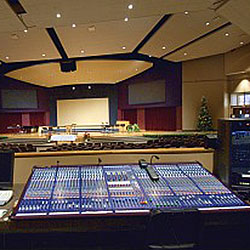
Outputs
Another factor is how many outputs you’ll need. The obvious one is the main output.
If you’ll be mixing the stage monitors from the house desk, then also be certain that you allow for enough auxiliary sends for those individual monitor mixes.
Since most musicians and singers prefer that their monitor mix not change during the course of the worship service, look to see that the console you’re considering has “prefade” auxiliary sends for those monitor mixes.
Many musicians and singers would prefer to have their own monitor mix, but that can be too expensive for many churches. If possible, provide at least two mixes, one for the vocalists and one for the musicians.
You’ll also want “postfade” auxiliary sends to feed your effects processors so that you can easily add reverb and other effects to the overall house mix. I
prefer at least two postfade aux sends for this application because I like to use different reverb settings for the vocals as compared to the music instruments.
If I can get a third postfade send, I’ll use it as a feed to a digital echo device to add a bit of echo as needed.
In general, the more auxiliary sends you can afford, the more fun you’ll have in mixing, because it adds a tremendous amount of flexibility.
The best of both worlds would be a PRE/POST switch on each monitor send, because then you could make each monitor send on each channel either a prefade send or a postfade send. Unfortunately, you’ll find that kind of feature only on the very expensive consoles.
Consider it a mixing advantage to choose a console with submasters. I teach in my classes on console operation to always keep the fader (volume control) down on unused channels.
The sound operator can eliminate excessive stage noise and significantly improve the gain-before-feedback condition simply by turning off the unused channels during strategic moments.
Submasters allow the operator to easily drop those sounds out of the mix without upsetting the careful musical balance that he/she has created during the worship set. Submasters make those mix changes repeatable and easy to do.
Inexpensive consoles often have fixed frequency choices on each channel’s equalizer section.
That can pose a serious limitation to enhancing the tonal quality of a sound, because rarely are the frequencies chosen by the manufacturer precisely what the engineer needs to make an improvement in the sound.
A console that has a sweepable midrange frequency control on each channel will provide the needed flexibility.
Budget Realities
Isn’t it great that audio manufacturers have succeeded in bringing down the price of consoles over the years!?!
So what do you buy – a 32-input console that costs $4,000, or a 32-input console that costs $40,000? Good question. Don’t get me wrong – there’s a marked difference in the quality of sound between two consoles with that wide of a price spread.
If I had the budget, sure I’d spend the $40,000. In fact, I’d push for double that if possible.
But there are a lot of 32-input consoles below the $15,000 mark that sound quite good, and have tremendous signal routing flexibility.
I’ve installed a few of those $4,000 consoles that sounded and performed quite well. They made my system sound good, and they made my client happy.
